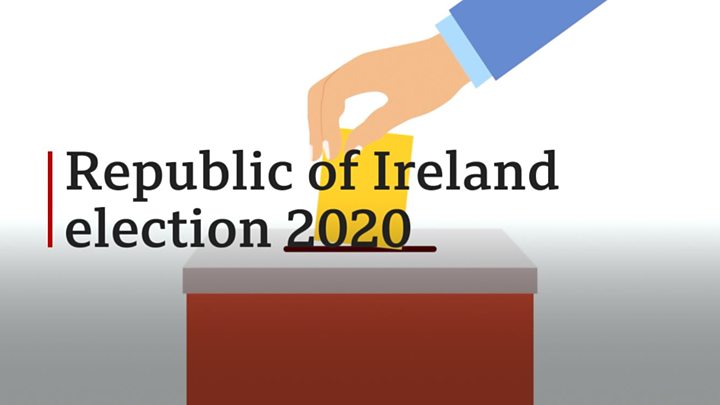Staff Writer Meagan McGlynn discusses the results of the Irish General Election.
Meagan McGlynn | Staff Writer
Discussions into how the 33rd Dáil Éireann (Irish House of Parliament) is to be formed are set to continue for several more weeks, after Sinn Féin’s unforeseen surge in seats has left none of the main parties with an overall majority.
Despite winning the election in terms of the popular vote, securing almost twenty-five per cent of the electorate’s first preferences, Sinn Féin only ran forty-two candidates, thirty-seven of which earned a seat in the next parliament. With 160 seats in the Dáil, the next government needs to consist of at least eighty TDs (Teachta Dála, member of the Irish Parliament) in order to hold a majority, ideally more to ensure stability.
The other two main parties in Ireland, Fine Gael and Fianna Fáil, won thirty-five and thirty-eight seats respectively, meaning a coalition with two or more parties will need to be formed in order to establish a government. This numbers game is proving to be more difficult than anticipated, and is complicated by the leaders of both centre-right parties, Fianna Fáil and Fine Gael, refusing to discuss the possibility of going into government with the left-wing Sinn Féin. However, Sinn Féin leader Mary Lou McDonald has expressed her party’s preference is to form a government with other, smaller, like minded parties, excluding the two parties who, between them, have been in government in Ireland over the past two decades. Speaking to Irish national broadcaster RTÉ, McDonald said,
“Sinn Féin wants to form a government of change and our objective is a government that builds homes, cuts rents and freezes them, reduces the pension age to 65, gives workers and families a break, and advances Irish unity.”
The Irish General Election 2020 truly was an election of change, with forty-eight of the 160 members of the incoming Dáil being elected for the first time. Fine Gael, the outgoing party in government, has accepted defeat after losing twelve of their TDs, with party leader and outgoing Taoiseach (prime minister) Leo Varadkar saying his party is willing to step back to see if Sinn Féin can form a government of their own.
“We were defeated in this election, there is no point in trying to dress that up in any way,” he said to RTÉ.
“It may have been a tight finish, but we were defeated so that means that people are saying to us that Fine Gael should go into opposition and we are absolutely willing to do that.”
It could be said that Ireland was somewhat blindsided by Sinn Féin’s overwhelming victory. Of the 993,405 votes cast in the election, 276,711 were first preference votes for a Sinn Féin candidate (Irish Times, 2020). This follows an intense electoral campaign with healthcare and housing at the forefront. However, due to most constituencies only having one Sinn Féin candidate, if any at all, their votes which were surplus of their quota, of which there were 88,350 nationally, were re-allocated to second and lower preference candidates of Sinn Féin voters. This certainly aided smaller parties, such as the Green Party, Social Democrats and People Before Profit, and also helped the outgoing opposition party Fianna Fáil, who, despite receiving less votes, ended up with the most Dáil seats, at thirty-seven.
These numbers do not seem to have helped leader Micheál Martin hugely, however, as he failed to gather enough votes to become Taoiseach when votes were cast as the new Dáil resumed last Thursday, February 20th. In addition to the leaders of the top three parties, Leo Varadkar, Micheál Martin, and Mary Lou McDonald going for Taoiseach, the leader of the Green Party, Eamon Ryan, also put himself forward. No candidate, however, earned enough votes to be deemed elected, and so another election will be held when the Dáil resumes on Thursday, March 5th.
In the meantime, Leo Varadkar travelled to Áras an Uachtaráin, the residence of the President of Ireland, Michael D. Higgins, to give his resignation as Taoiseach, as he is required to do so by the Constitution following his failure to be re-elected. He will remain Taoiseach in a caretaking capacity until his successor is elected, or he himself is re-elected, as losing the first time around does not disqualify him from putting himself forward again when they next hold elections for Taoiseach.
This first round of elections has made history however, in that it is the first time a woman – that is, Mary Lou McDonald – has received the highest number of ‘Tá’, or ‘Yes’ votes. It was still outnumbered by the ‘Níl’, or ‘No’ votes, and so she was not elected, but all signs are pointing towards a new and very different political scene within Ireland. As discussions into Government formation and elections for the new leader of the country continue, only time will tell who will be leading Ireland into the next five years.





